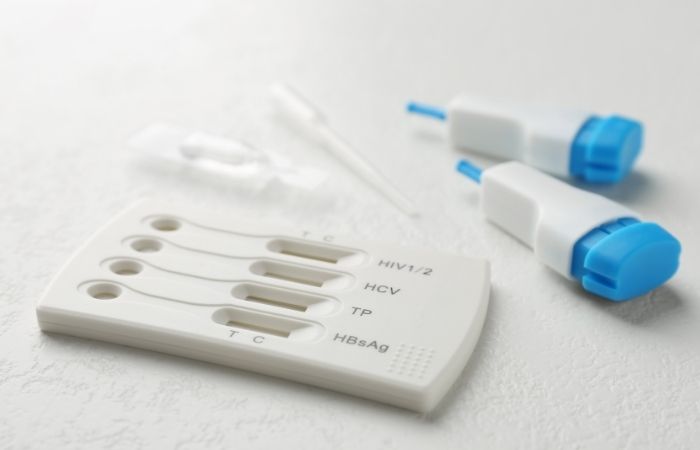Quick Answer: You can absolutely have an STD without symptoms, and still pass it to others. Infections like chlamydia and herpes often go unnoticed for months or even years. Regular testing is the only way to know for sure.
“But I Feel Fine”, The Lie That Lets STDs Spread
Most people think STDs come with obvious red flags. Burning. Pain. Sores. That terrifying “what is that?” moment in the mirror. But the truth? Up to 80% of chlamydia cases and over 70% of gonorrhea infections in women are completely symptom-free, according to CDC data. In men, many infections are milder or delayed, so they go unnoticed and untreated for longer.
Here’s the kicker: even if you don’t feel anything, your body might still be hosting, and spreading, a contagious infection. That means hookups, long-term partners, and even fertility can be affected by something you don’t even know you have.
Let’s break down some of the most common STDs and how often they stay silent:
| STD | Percent Asymptomatic | Contagious Without Symptoms? |
|---|---|---|
| Chlamydia | ~70% of women, 50% of men | Yes |
| Gonorrhea | ~50% of women, 10% of men | Yes |
| Herpes (HSV-2) | Up to 90% don’t know they have it | Yes – viral shedding can occur without outbreak |
| HPV | Most people are asymptomatic | Yes |
| HIV | Weeks to years with no symptoms | Yes – especially early (acute) phase |
| Trichomoniasis | ~70% asymptomatic | Yes |
Table 1. Even without symptoms, these STDs can be active and transmissible, making regular testing critical.
“I Didn’t Feel a Thing, Until My Partner Got Sick”
Jordan, 26, was in a monogamous relationship for over a year when his partner tested positive for chlamydia. The conversation was brutal. He’d never felt any symptoms. No discharge, no pain. Nothing that would’ve tipped him off. But after some digging, it turned out Jordan had unknowingly carried and passed the infection for months. “I didn’t cheat,” he told the clinic nurse. “But I guess I didn’t test either.”
“It never crossed my mind. I assumed no symptoms meant no infection. I was wrong.”
This isn’t rare. Silent infections can live undetected in your system, and spread to others, long before they cause complications like pelvic inflammatory disease (PID), infertility, or chronic pain. In fact, for many STDs, the contagious period starts before symptoms ever appear, if they appear at all.
Symptom-Free ≠ Risk-Free: How STDs Sneak In
Here’s where people get confused: just because you’re not seeing discharge or feeling pain doesn’t mean you’re in the clear. Two key terms explain this:
- Incubation Period: The time between exposure and when symptoms might show up.
- Window Period: The time between exposure and when a test can accurately detect the infection.
The real problem? You can still spread an STD during both of these periods, even if you have zero symptoms. This includes oral, vaginal, and anal sex, and in some cases, even skin-to-skin contact.
Herpes is a prime example. You don’t need to have visible sores to pass it. Viral shedding can occur when there are no signs at all, especially in the first year of infection. That means someone can test positive, and be contagious, without a single outbreak.
HPV behaves similarly. It can lie dormant in your body for months or years and still be passed to others during sex. You might never get warts or symptoms, but your partner could develop cervical changes that lead to cancer. That’s not drama, that’s the medical reality.

People are also reading: Casual Sex, Real Risk: Why STDs Slip Through in FWB Setups
The Longer You Wait, the Higher the Risk
Waiting for symptoms is like waiting for a fire alarm after the house has already burned down. By the time obvious signs show up, like pain, odor, sores, or discharge, you’ve often already had the infection for weeks or months. Worse? You may have passed it to someone else during that time.
STDs don’t just impact your body; they can ripple through your relationships, your mental health, and your long-term well-being. And it’s not just about sex, some infections can be transmitted during birth, through oral contact, or from shared toys and gear if not cleaned properly.
So what do you do if you’re not feeling symptoms, but still want to stay safe?
This is where routine screening comes in. If you’re sexually active, even with just one partner, you should be testing every 3–6 months depending on your risk profile. And if you had a recent hookup, even without symptoms, it’s smart to test two to four weeks after exposure, and again after 3 months for HIV or syphilis.
Don’t wait for something to “feel off.” If your head keeps spinning, peace of mind is one test away.
Why Some People Are More Likely to Miss the Signs
Not all bodies give the same clues, and that’s a huge part of why so many STDs go unnoticed. Whether due to anatomy, hormones, or healthcare access, some people simply don’t get the textbook warning signs. And even when they do, they may not recognize them as symptoms.
Take vaginal anatomy. Infections like chlamydia, gonorrhea, and trichomoniasis often cause very mild or no irritation at all in the vaginal canal. A little spotting? A faint smell? Easy to brush off as a yeast infection, period weirdness, or post-sex irritation.
For people with penises, the early symptoms, like clear discharge or burning while peeing, might not show up until the infection has already been present for a while. And even then, if it’s not intense, many don’t seek care.
Now layer in queerness, shame, and medical trauma. LGBTQ+ folks often delay testing out of fear of judgment or dismissal. People assigned female at birth are frequently misdiagnosed or told it’s “just BV.” Trans and nonbinary individuals may avoid care altogether if they’ve had negative clinical experiences.
And let’s not forget the mental health piece. Anxiety, depression, and denial all play a role. It’s easier to ignore a worry than to sit in a clinic lobby, especially if you think you’re being “paranoid.”
Bottom line? The system isn’t built for everyone to notice or catch symptoms in time, and STDs take full advantage of that.
Real-World Reasons STDs Get Missed
Still think you'd notice if something was wrong? Let’s play this out with a few real-life moments that make it easy to miss (or excuse) early signs of infection:
Scenario 1: The Weekend Warrior
You get together after a festival. Using condoms was... not clear. You feel a little off a week later, but you think it's just dehydration, friction, or the aftereffects of a UTI. You let it go. You just missed an early sign of chlamydia or gonorrhea.
Scenario 2: The Relationship Comfort Zone
You’ve been monogamous for a few months. You both got tested before you started dating (or at least you think you did). When mild itching shows up, you blame laundry soap or shaving. Turns out, one of you had dormant herpes, and now it’s active.
Scenario 3: The No-Symptom Mismatch
Your partner tests positive after a routine screening. You rush to get tested and feel shocked by a positive result. You feel totally fine. You still don’t feel sick. And yet, you’ve been contagious the whole time.
This isn’t about paranoia. It’s about awareness. If you’ve had sex, oral, anal, vaginal, or just close skin-to-skin, you’ve had exposure risk. And if you’ve never tested, you genuinely don’t know your status.
Check Your STD Status in Minutes
Test at Home with Remedium7-in-1 STD Test Kit

 For Men & Women
For Men & Women Results in Minutes
Results in Minutes No Lab Needed
No Lab Needed Private & Discreet
Private & DiscreetOrder Now $129.00 $343.00
For all 7 tests
Testing Even When You Don’t Feel Sick: Why It’s Not Paranoia
“But I don’t have any symptoms.” That’s the number one reason people skip testing, and it’s also the exact reason STDs keep spreading. The truth? By the time most symptoms show up, the infection has already had time to settle in and potentially cause damage or spread to others.
Routine testing isn’t just for people who “sleep around” or had a scare. It’s for anyone who’s had sex, oral, vaginal, or anal, with another human being, ever. Period. Whether that was last weekend, six months ago, or way back with an ex you never talked about status with.
Not sure where you fall on the risk spectrum? Use the table below as a gut check, not to freak you out, but to help you move from “maybe later” to “let’s be sure.”
| Situation | STD Testing Recommendation |
|---|---|
| Had unprotected sex with a new partner | Test after 2–3 weeks, retest at 3 months for HIV & syphilis |
| Using condoms consistently but had oral sex | Test every 6 months; oral sex can still transmit herpes, gonorrhea, syphilis |
| In a monogamous relationship, but never tested together | Baseline test for both partners ASAP, symptoms aren’t a reliable indicator |
| Had a one-night stand and feel fine | Don’t wait for symptoms; test after 2–4 weeks to rule out common infections |
| No recent partners but it’s been over a year since last test | Annual screening is smart, even if you’re on a sexual break |
| Experiencing mild UTI-like symptoms or spotting | Rule out chlamydia, gonorrhea, trichomoniasis, especially if symptoms linger |
Table 2. When and why to test, even if you're symptom-free.
Testing doesn’t mean you’re dirty or dramatic, it means you care about your health, your partners, and your peace of mind. Whether it’s a routine screen or a “just in case” check after a blurry weekend, trust your gut. Waiting for a symptom is how things slip through the cracks.
You don’t need to explain yourself to anyone. You just need to know your status.

People are also reading: You’ve Probably Never Heard of Trich, But It’s More Common Than Gonorrhea
FAQs
1. Can I really have an STD with zero symptoms?
Yup. Happens all the time. In fact, most people with chlamydia or herpes don’t know they have it, because nothing feels weird. No itch, no drip, no red flags. That’s why they spread so easily. Silence doesn’t mean safety.
2. How long can an STD just sit there without making a fuss?
Depends on the bug. Some like HPV or herpes can stay dormant for months or years. Others, like chlamydia, can hang out quietly for a few weeks before maybe, maybe, causing symptoms. Either way, they don’t need to make noise to do damage.
3. If I don’t feel sick, I’m not contagious... right?
Sorry, not how it works. You can pass STDs like herpes, HIV, or trich even when you feel totally fine. Herpes sheds virus invisibly. HIV spikes early on before you even know it. Feeling good doesn't mean you're off the hook.
4. What if I use condoms, am I still at risk?
Condoms definitely lower the odds (keep using them), but they don’t block everything. Skin-to-skin STDs like HPV and herpes can still sneak through. And oral sex? Often unprotected, and often how people catch stuff without realizing it.
5. I’ve only been with one person. Do I still need to test?
Yes. Monogamy is great, but only if both partners were negative when the relationship started and no one’s had outside contact. Life’s messy. So are timelines. Don’t assume. Test, then trust.
6. Can an STD mess with my fertility even if I never had symptoms?
Unfortunately, yes. Chlamydia and gonorrhea are repeat offenders here. They can quietly scar fallopian tubes or cause inflammation in the testicles. It’s like mold in the walls, by the time you see signs, it’s already spread.
7. I tested negative last week, am I good?
Maybe. Depends on when your last risk happened. Every STD has a “window period” before it shows up on a test. If you tested too soon, it might’ve missed it. Some need a retest 2 to 4 weeks later to be sure.
8. What’s the best test if I’ve got no symptoms but still want peace of mind?
Go for the 7-in-1 STD At-Home Rapid Test Kit. Covers the big five: chlamydia, gonorrhea, syphilis, trich, and HIV. One test, discreet box, no waiting room. If you’ve been sexually active in the last 6 months, it’s a solid move.
9. Do I really have to tell someone if I test positive but didn’t feel sick?
Yes. It’s not about guilt, it’s about giving them a chance to protect themselves. They may be symptom-free too. You can use anonymous text tools if a convo feels hard. What matters is making sure they don’t find out the hard way.
10. What if I’m scared to know?
That’s real. No shame there. But not knowing doesn’t make the risk disappear, it just delays peace of mind. The relief most people feel after testing, even when it’s positive, is real. Knowing puts you back in control. Take it one step at a time.
You Deserve Answers, Not Assumptions
Feeling “fine” is not the same as being STD-free. The harsh truth is that most infections don’t announce themselves, and the longer they go undetected, the more damage they can do. You’re not reckless for wanting clarity. You’re responsible.
Testing isn’t about judgment. It’s about agency. If something’s been nagging at you, maybe an old partner, a recent hookup, or just a gut feeling, it’s time to listen. This at-home combo test kit checks for the most common STDs discreetly and quickly.
How We Sourced This Article: We combined current guidance from leading medical organizations with peer-reviewed research and lived-experience reporting to make this guide practical, compassionate, and accurate. In total, around fifteen references informed the writing; below, we’ve highlighted some of the most relevant and reader-friendly sources.
Sources
2. About Sexually Transmitted Infections (STIs) | CDC
3. Sexually Transmitted Diseases (STDs): Why You Might Not Know You Have One | Mayo Clinic
4. Everyone Should Know About Asymptomatic STIs | Verywell Health
5. How Long Does It Take for STDs to Show Up? | Healthline
About the Author
Dr. F. David, MD is a board-certified infectious disease specialist who works to stop, diagnose, and treat STIs. He combines clinical accuracy with a straightforward, sex-positive attitude and wants to make his work available to more people, both in cities and in rural areas.
Reviewed by: Faye Lin, MPH | Last medically reviewed: November 2025
This article is for informational purposes and does not replace medical advice.










